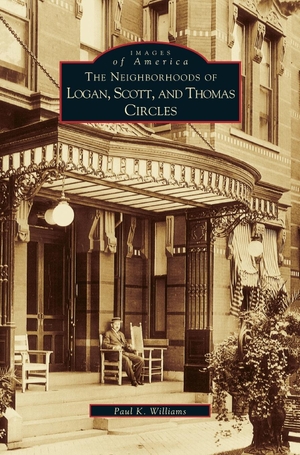Für statistische Zwecke und um bestmögliche Funktionalität zu bieten, speichert diese Website Cookies auf Ihrem Gerät. Das Speichern von Cookies kann in den Browser-Einstellungen deaktiviert werden. Wenn Sie die Website weiter nutzen, stimmen Sie der Verwendung von Cookies zu.
Cookie akzeptieren
Paul K. Williams
Neighborhoods of Logan, Scott, and Thomas Circles
- Arcadia Publishing Library Editions
- 2001
- Gebunden
- 130 Seiten
- ISBN 9781531609528
From the farm and orchard lands of the mid-1880s to the Civil War encampments, from modest wood frame homes to vast residences of Victorian splendor, the area surrounding the closely located Logan, Scott, and Thomas Circles has for many years been at the center of a rich history. Comprising a diverse architectural and social heritage, these neighborhoods have played a part in the great story of the capital city and have been home to the workingman and woman, the wealthy, the middle class, and the politically powerful alike. Following their use as the site of hangman's gallows for Civil War traitors, all three circles evolved into lush parks surrounded by the elegant, Victorian-era homes that housed nearly all of the nation's elite by the 1890s. Prior to the turn of the
Mehr
Weniger
zzgl. Versand
in Kürze